The largest mortar in history. Self-propelled mortar 2B1 "Oka"
The biggest guns in stories... Among the most powerful artillery systems, the self-propelled Soviet mortar 2B1 "Oka" would definitely not be lost. The 420mm mortar, introduced at the height of the Cold War, is often referred to as the Soviet nuclear club. This is a fair comparison, since the Oka mortar was originally developed for firing nuclear weapons.
The appearance of the nuclear club
The Second World War ended, but the redivision of the world did not stop. Now the former allies began to divide the planet into spheres of influence, and the confrontation between ideologies flared up with renewed vigor. True, now, thanks to nuclear arms, the world was spared a repetition of the sad experience of the world war. Only the Cold War and a series of local conflicts pushed countries towards an arms race.
Being drawn into this race, the defense industry of the USSR developed more and more new types of weapons. They were often created in response to the actions of the United States and its allies. The creation of large-caliber artillery systems designed for firing nuclear ammunition was a response specifically to American developments and tests.
In the United States, in the spring of 1953, at a training ground in Nevada, the American military successfully tested the T-131 (M65) artillery system, nicknamed "Atomic Annie". It was a 280 mm cannon based on a highly powerful 240 mm prototype cannon. The American industry has produced 20 such installations, which, when adopted, received the M65 index.
This artillery mount went down in history as the first weapon from which a projectile with a real nuclear warhead was fired. The 15 kt projectile was successfully tested in Nevada on May 25, 1953. The detonation of a nuclear weapon took place 19 seconds after the shot at a distance of 10 kilometers from the gun at an altitude of about 160 meters. Photos and videos of test data have survived to this day.
The first nuclear artillery tests in history did not go unnoticed for the USSR. The development of the Americans, which could send projectiles with nuclear charges at a distance of 25-28 km, made an impression on the Soviet military. A rational reaction was the order for the Soviet industry of such artillery systems of special power.
Already in November 1955, a decree of the Council of Ministers of the USSR was published, which launched work on the creation of nuclear artillery: a 420-mm self-propelled mortar and a 406-mm self-propelled gun "Condenser-2P", which we will talk about later.
Initially, the 420-mm self-propelled mortar was also associated with "electrical engineering", as it was known under the designation "Transformer", which was later replaced by "Oka". The assignment for the development of a self-propelled 420-mm mortar was issued to two of the largest Soviet defense enterprises. The engineers of the design bureau of the Leningrad Kirov plant were responsible for the creation of the chassis, where the famous Soviet heavy Tanks KV. For the creation of an artillery unit of a mortar of special power, the engineers of the Kolomna Special Design Bureau of Mechanical Engineering were responsible.
The development of unique artillery installations continued from 1955 to 1957. In 1957, four 420-mm Oka self-propelled mortars were assembled. In the same year, the mortars were presented to the public, taking part in the traditional parade on November 7 in Moscow. Work on this project continued in the Soviet Union until 1960, after which, on the basis of a government decision, this project was officially closed.
Features of the 420-mm self-propelled mortar "Oka"
The Soviet designers were faced with the task of developing a mortar of special power, which could send mines weighing 750 kg at a distance of up to 45 km. At the same time, they were tasked with creating such an installation that would retain its performance with a large number of shots. The last condition for an artillery installation in a full-fledged nuclear conflict might not be needed.
The designers coped with the assigned tasks, the 420-mm self-propelled mortar 2B1 "Oka" could hit targets at a distance of up to 45 km using active-reactive ammunition. The firing range of conventional mines was up to 25 km. Especially for this mortar, a mine with a nuclear charge of the RDS-41 type was developed. The mass of the mine was 650 kg, the initial speed was up to 720 m / s. The power of the ammunition was estimated at about 14 kt. Also, some sources indicate that a small-sized charge RDS-9, which was originally created for the Soviet 533-mm torpedo T-5, could be used as a warhead of a mine.
The rate of fire of the 2B1 self-propelled mortar, which was loaded with a heavy feathered mine from the breech of the barrel, was quite small and did not exceed one shot every five minutes. In an hour, the installation could fire 12 mines at the enemy, although even one successful shot in real combat conditions could provide an excellent result.
An interesting feature of the artillery installation was that in the body of the self-propelled mortar there was only room for the driver, the rest of the calculation of the artillery installation, which consisted of 7 people, was transported separately in an armored personnel carrier or truck.
The mortar itself really amazed the imagination and at the very first parade in Moscow in November 1957 made an indelible impression on the audience. The installation weighing about 55 tons was built on a special chassis "object 273", created on the basis of solutions for the Soviet heavy tank T-10M (object 272). The length of the installation with the cannon in front exceeded 20 meters, the width was 3 meters, and the height was 5,7 meters. For comparison, the height of an ordinary five-story "Khrushchev" is 14-15 meters.
It is also interesting to compare with the combat weight of the KV tank, the 1939 model weighed 43 tons, the T-10M (IS-8) heavy tank weighed 50 tons. Weight was one of the main disadvantages of the atomic mortar. Despite the solid engine from the T-10M with a capacity of 750 hp. with., the maximum speed of the installation on the highway did not exceed 30 km / h. But this is in ideal conditions, in life the speed of movement was much lower. At the same time, during operation, it turned out that the tracks of the base chassis belt were only enough for 20-35 km of travel, after which they needed to be replaced.
The main armament of the 2B1 "Oka" artillery mount was the 420-mm 2B2 smoothbore mortar. The length of the mortar barrel was approximately 20 meters or 47,5 caliber. The mortar barrel during firing could be directed vertically in the range from +50 to +75 degrees. There were no horizontal guidance angles, the turn to the target was carried out by turning the chassis of the self-propelled mortar.
Experts attributed the lack of anti-recoil devices on the artillery mount to the interesting features of the 420-mm Oka mortar. For this reason, at the time of the shot, the atomic mortar rolled back about five meters.
The fate of the project
Unfortunately, "Oka" appeared at the wrong time.
The decline of the project was facilitated not even by the shortcomings of the chassis (the self-propelled mortar turned out to be too heavy), but by the rapid development of missile weapons. The fact that Nikita Khrushchev clearly relied on missiles also played a role.
In 1961, just four years after the triumphant appearance of the Soviet nuclear artillery of special power at the parade, the 2K6 Luna tactical missile system of the second generation was adopted. It is with the emergence of this complex that experts associate the decline of nuclear artillery.
The complex was simpler to operate, had a lower cost and opened up new opportunities for the military. With a launcher mass of 15,5 tons versus 55 tons for a 420-mm mortar, the complex could hit targets at a distance of up to 45 kilometers using a wide range of missiles.
For some time, the USSR still harbored ideas for the creation and development of reduced nuclear artillery ammunition for the 240-mm M-240 mortar and the 203-mm artillery system B-4 (B-4M), but the rapid development of missile weapons stopped these plans. The next version of the TRK "Luna-M" could confidently hit targets at a distance of up to 70 km, leaving far behind any artillery systems.
In May 1961, six units of Soviet nuclear artillery of special power took part for the last time in a parade in Moscow on Red Square. In the same year, in July, the 2nd artillery regiment of the RVGK was disbanded, which included all four Oka atomic mortars.
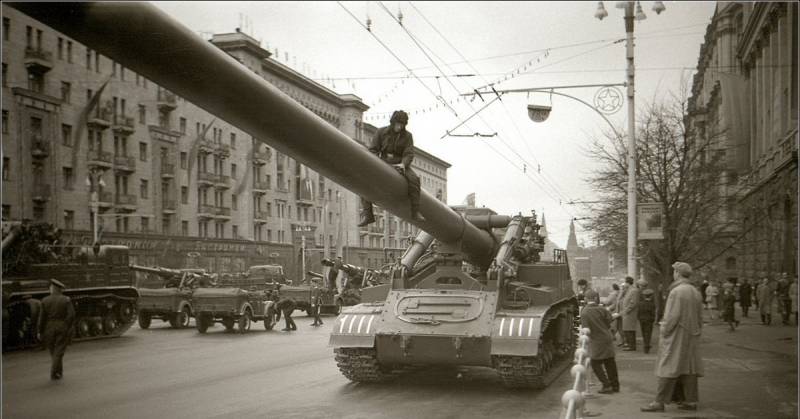
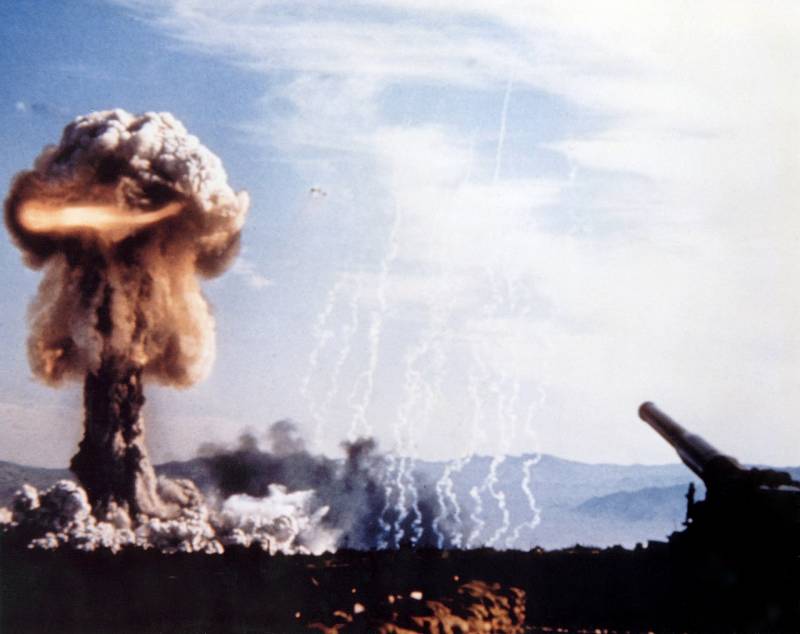
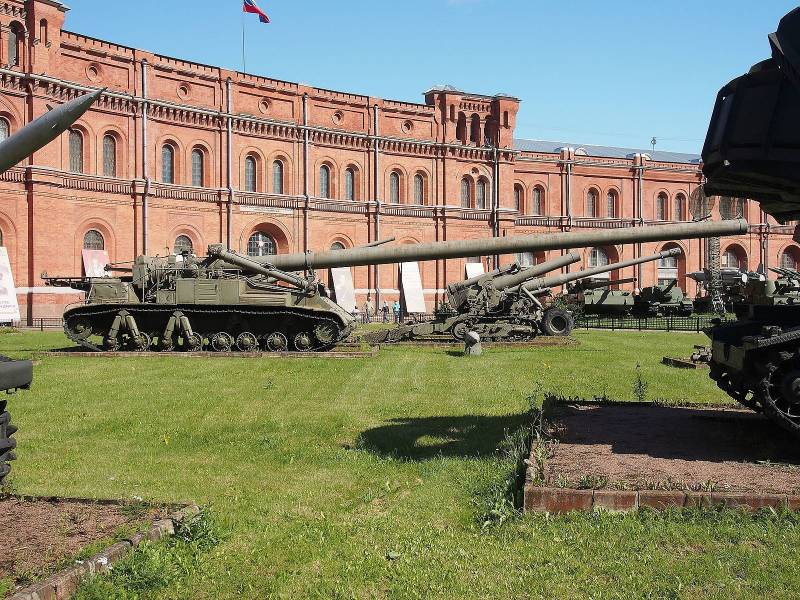
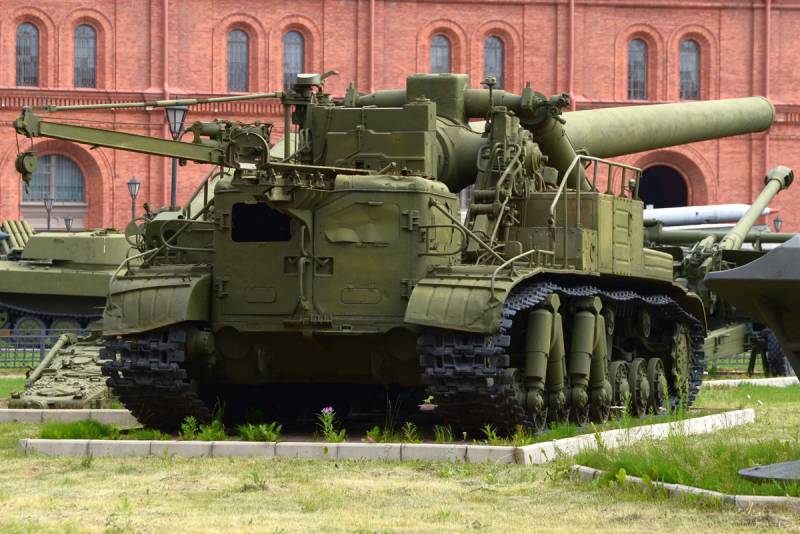
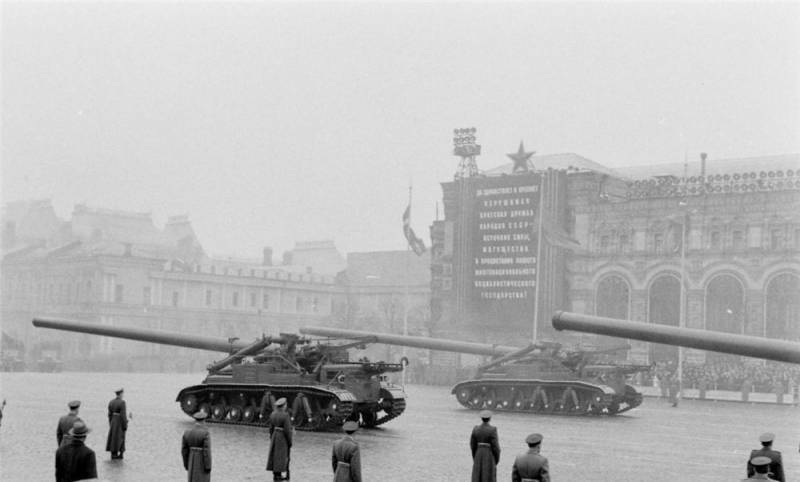
Information